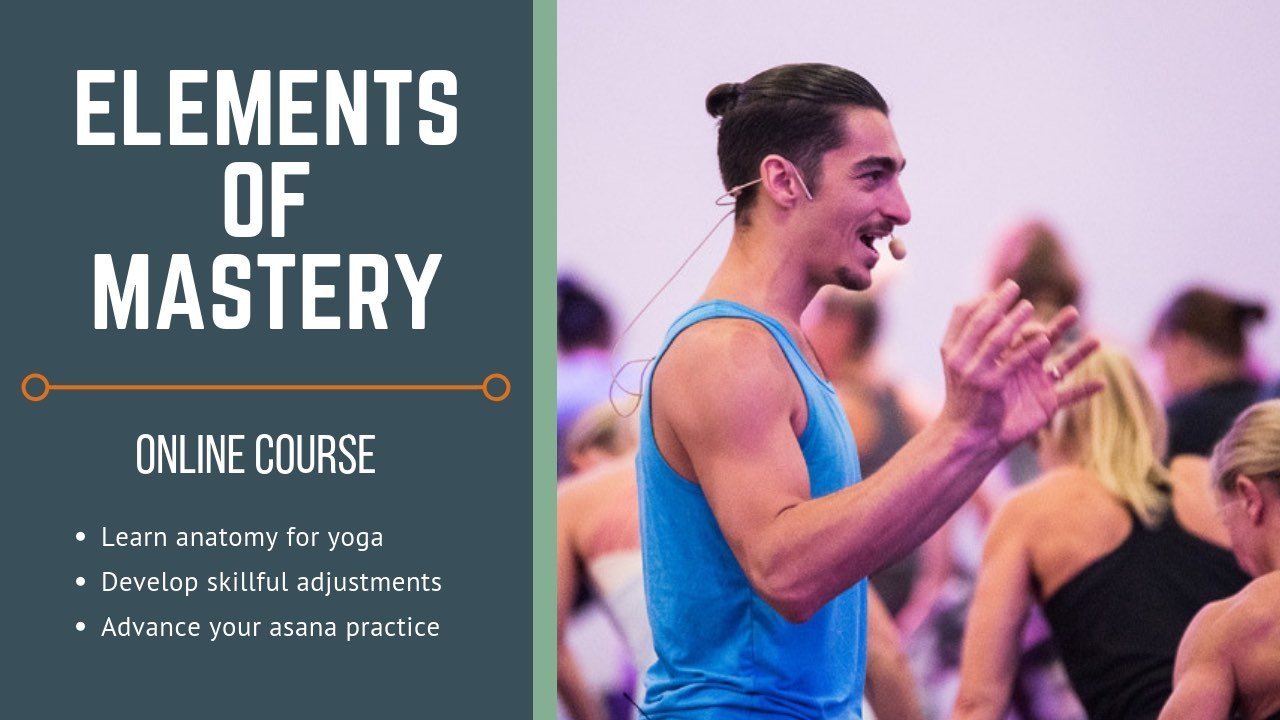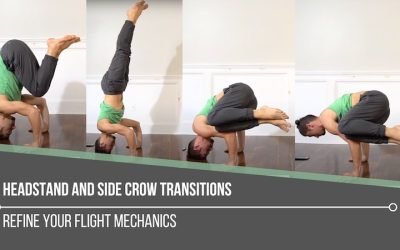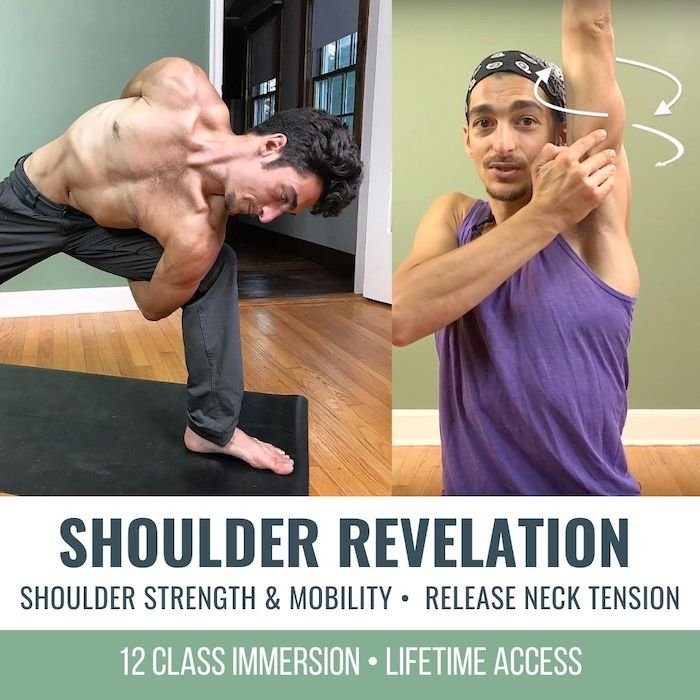Handstand ActionsLEAN, GRIP, PUSHHANDSTAND ACTIONS Handstand isn’t something we conquer in a single class, it’s a layered process that demands repetition and refinement. There are certain key handstand actions that are non-negotiable: lifting the shoulders up to the...
Headstand: 3 Ways In
Three Ways In
Headstand is a powerful pose, typically referred to as the King of the Yoga Asanas (poses). While the gurus and masters have long been preaching the importance of headstand, modern-day anatomists often caution against it. Physically speaking my personal relationship with headstand has been mostly positive, while emotionally there were a couple of years of fear around the potential risks. The warnings of many of my teachers, in addition to neck and shoulder pain eventually turned me away from practicing the pose. In recent years I finally discovered the root cause of my neck pain had very little to do with my neck itself and everything to do with an imbalance in one of my rotator cuff muscles causing referral pain. The reason I feel this is important to mention is that when we are in pain we can be so quick to blame that we might miss what is really going on. We see it all the time in modern medicine. Instead of searching for the root cause of our problem, we focus on the symptom. Let me be clear here, I am not saying if you have neck pain you should do Headstand, I am simply stressing the importance of searching for the root of the pain. Dig deep, keep an open mind, and explore.
So when is it appropriate to do headstand? This question is not easily answered as it depends on many factors but here are some basic guidelines to consider.
1. The state of health in your body: Headstand is most appropriate for Yogis with a healthy spine and disks, consult a chiropractor (preferably one that practices yoga) to see if it’s right for you. Same goes for blood pressure irregularities, and of course pregnancy – check with a doctor. If you have other concerns seek professional guidance. If you feel good and know you are in good health, this pose might be your next best friend.
2. Your Level of Practice, strength, and body awareness: In the video, I mention that there are three levels of entering into headstand; beginner-advanced. Personally, as a teacher I feel headstand is for the intermediate level student, so while I talk about the three levels consider that these are meant for the intermediate student. For the advanced Yoga Asana practitioner, there are multiple ways in and out of headstand, and for the beginner I feel it is most important to build the following prior to attempting the pose:
Beginners: Preparatory Strength and Technique
- Shoulder Strength: From the moment you begin your yoga practice you are likely building shoulder strength. If your desire is to move toward headstand, I suggest building strength specific to having your arms overhead and in front of you. Downward Dog, Arm Balances, Handstand preparations, Dolphin Pose are all great poses to start off with.
- Back Body, Spine Strength: Developing the muscles along the back body and spine will help to stabilize your head, torso, and legs when you are ready to work toward headstand.
- Neck Strength: Neck strength can be built in preparation. I recommend doing standing yoga postures with hands behind the head and pressing the head back into the hands. This will also help set the head back which can lead to a more optimal alignment of the spine when in headstand, as well as in daily life.
For my top inversion strength training exercises, check out my Handstand Video at www.TheYogiMatt.com/Handstand
Benefits of The 3 Approaches
While scrolling through Instagram and Facebook over the past year or so there is obviously a strong desire to invert amongst yogis. It is beautiful to see the determination amongst practitioners to conquer their fears and prove to themselves that they can do more than they ever could imagine. That dedication toward results typically comes with hazardous experimentation, and maybe a little bit of (dare I say) impatience? I am not innocent when it comes to this topic, which is why I wanted to offer what I have learned along the way to help speed up your overall journey, and potentially save you from some of what I have gone through. I know everyone has to go through their own journey, and I know some of you out there are indeed looking for guidance, and are excited to learn. So if you are interested in the techniques and tools that will develop and empower your practice, I have created a video highlighting three challenging yet highly effective approaches toward headstand. Each one builds strength for the next, so my suggestion is beginners really master the first one without lifting the feet off the ground, and advanced practitioners use all three as drills to build body awareness and strength.
The 3 Approaches
- Half Tuck: The Half tuck teaches the shifting of weight from the feet to the head and arms while not demanding as much body awareness and hamstring flexibility. The first step is simply learning how to point the foot that is on the ground in order to shift your weight. In the video I use a block as a method to get around tight hamstrings. You may stack more than one block so long as you feel stable. The second part of this is to tuck your second leg into your body and balance in a “tuck” position. This may be highly challenging, but keeping your legs in a tuck has the benefit of being low to the ground. Lower center of gravity is easier to balance and therefore can be a safer place to learn balance. I would say that while there is always a risk when balancing upside down, the risk is less than in a full headstand.
- Full Tuck: Once you find repeated success with the tuck position and feel comfortable holding it for more than a minute you might try coming straight into a tuck position rather than one leg at a time. This is more challenging on many levels but mostly it requires greater flexibility in the hamstrings, and a stronger sense of proprioception (knowing where your body is in space). If this entrance is feeling great, the second aspect of it is to start extending at the hip joint, bringing your knees upward. How high up to bring the knees will depend on your level of comfort and balance.
- Straight Leg Press: Going Straight into a headstand through what is called a pike position in gymnastic and acrobatic language, is definitely the most challenging. It requires tremendous body awareness, low back, and buttock strength. It requires that the hamstrings are both flexible and strong. I highly recommend getting comfortable tucking all the way up and being able to hold a straight headstand for over a minute prior to attempting this.
Note: For all three approaches be sure to have a teacher around to support you and be your eyes for what you cannot see.
Beyond the Entry
Getting into headstand is just the start of the journey. Holding the balance while breathing steady and keeping your mind focused is the real exciting and beneficial part. I love to focus on my spinal curves while upside down, finding the most enjoyable balance. I also love to play with taking pressure off my neck which I will go over in my next blog and video!
To get started with your strength training and development of body awareness visit TheYogiMatt.com/Handstand. If you know someone that would benefit from this information please share the blog on social media or email. For questions please feel free to reach out to me directly: Matt@TheYogiMatt.com
















